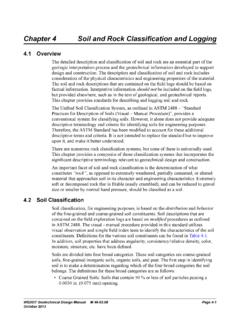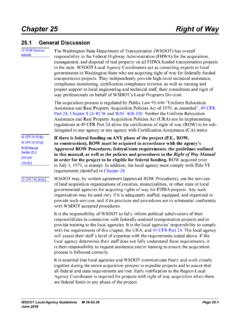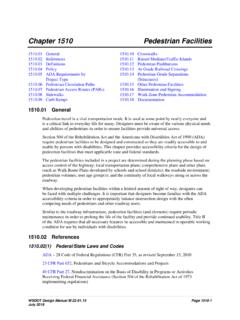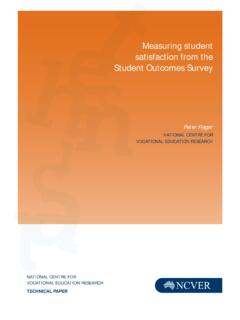Transcription of Chapter 16 Monumentation and Survey Records
1 Highway Surveying Manual Page 16-1 January 2005 Chapter 16 Monumentation and Survey Records16-01 Monumentation and Survey RecordsThe placement of markers or monuments in the ground is used for a variety of purposes. One of the more common purposes is to mark the corner locations of property ownership. In transferring a particular parcel of real property, written conveyances are used to describe the outer bounds or limits of that parcel. An ancient ritual known as the livery of seisin (delivery of possession), had the seller, purchaser and witnesses meet on the property, walk the perimeter or bounds of the parcel and then memorialize the contract by handing over a handful of dirt, twig, driving stakes into the ground or other act while uttering the words I give, to bind the conveyance.
2 Today, the transfer of real property does not have the same fan fare of the livery of seisin ritual but the acts of the ritual are still incorporated into our real property transfer laws. Deed documents, written descriptions, physical markers or monuments left by the owner or their land surveyor are evidence of the transfer of ownership (I give). Much of today s real property has been segregated into smaller parcels by written description only. To aid in defining the location of the larger and smaller segregated parcels, land owners and land surveyors have placed markers as a witness corner of the parcel(s) being transferred.
3 Often times these markers or monuments define a different geometry than the written description the monuments are supposed to be defining. The written conveyances often have errors or described lines within the body of the description that could impact the intent of the geometry or area of a particular parcel. Thus the purpose of the Survey monument and record of Survey / Monumentation Map document is to aid WSDOT and others using this information in defining the location of WSDOT S right of way and other land Monumentation and Survey RecordsExamples of monuments are brass caps, brass plugs, marked stones, iron pipes, lead plugs with tacks, wooden hubs with tacks, railroad spikes with punch marks, finishing nails or brass screws in fence posts, PK nails, concrete posts.
4 Reinforcing bars with plastic or aluminum caps and holes drilled in rocks. Monuments set by government agencies are identified by an official designation on the can be divided into five Geodetic control - usually set by government Public Lands Survey System (section and quarter section corners, witness corners, meander corners) originally set by government surveyors from the General Land Office (GLO). 3. Highway, road, and street alignment usually set by government Monuments used to define the location of highway or utility company rights-of- way set by government or private Property corners usually set by private 16-2 Highway Surveying Manual January 2005 Monumentation and Survey Records Highway Surveying Manual Page 16-3 January 2005
5 Monumentation and Survey Records16-03 Geodetic Control MonumentsGenerally, control monuments are classified as either primary or secondary. A control monument can be used for horizontal position, vertical position, or set by other agencies can be used if they are in a desired location. For example, an existing U. S. Geological Survey benchmark could be used for a horizontal control monument. Specifications for horizontal and vertical control monuments shall meet the standards of the Federal Geodetic Control Subcommittee (FGCS) of the Federal Geographic Data Committee (FGDC).
6 For safety reasons, control monuments should be placed as far away from traffic danger as possible. They should be set firmly in the ground with considerations as to the possibility of frost heave or ground settling. See Standard Plan H-6 for monument installation. WSDOT maintenance requests that the monument be set flush with the ground surface so it will not interfere with their on-going weed control program. When field conditions permit, monuments can be cemented into drilled holes of solid rock or concrete structures.
7 The terrain of each project will dictate the spacing of the control monuments (see Monument Spacing in Chapter 7). Placing a witness post (flexible guide post) near the monument helps find it again at a later date and tends to protect it from accidental destruction. Attach a standard label that states: Please Do Not Disturb Nearby Survey Marker .When writing the station description, include information on how to reach the general location of the monument from some prominent feature such as a junction of two highways.
8 Include the location by section-township-range and by State Route and milepost. Relate the monument to at least three nearby permanent objects by distance and direction and describe the specific details of the monument including any stamping or lettering. This data will be incorporated into the Report Of Survey Mark document. When completed, this report is then added to the WSDOT Survey monument Horizontal Control MonumentsHorizontal control monuments, whether primary or secondary, must be referenced to the NAD83/91 metric coordinate system of the Washington State Coordinate horizontal control monuments must be tied to the High Precision Network (HPN).
9 Primary horizontal control monuments are normally measured by using the Global Positioning System (GPS). If GPS is not used or is not practicable, then conventional means must be used to establish primary control that is tied to the HPN using procedures and equipment meeting second order class II FGCS control, designed to supplement the primary control, is used for photogrammetry and right of way surveys, to provide the basis for topography, or the layout of alignments and structures. Secondary horizontal control monuments must be tied to the primary horizontal control monuments by a traverse or GPS methods using procedures and equipment meeting third order FGCS possible, when setting horizontal control points, place another horizontal control point to act as an azimuth point.
10 Place it so that development in the area will not block the line of sight and in an area that is unlikely to be disturbed by impending setting brass caps for horizontal control, position the cap facing approximately North using a 16-2 Highway Surveying Manual January 2005 Monumentation and Survey Records Highway Surveying Manual Page 16-3 January 2005 Monumentation and Survey RecordsFigure 16-1 Horizontal / Vertical Control













![[SVY] Survey Data](/cache/preview/9/6/d/3/9/2/9/a/thumb-96d3929a73d28cef1e52f286a6757a43.jpg)



